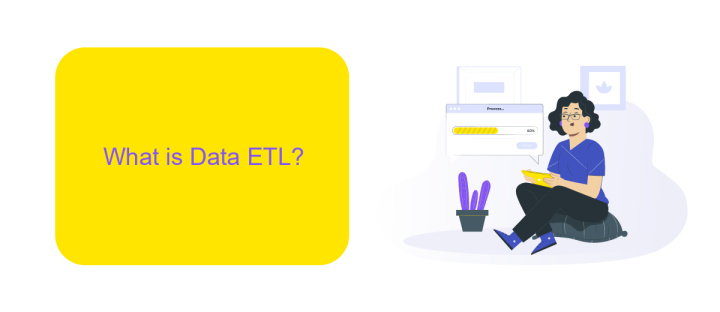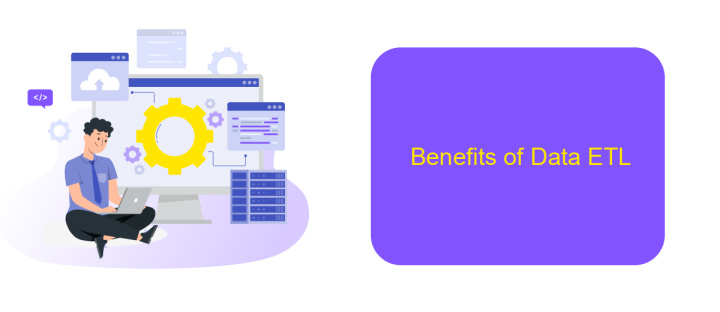Data ETL Definition
ETL, which stands for Extract, Transform, Load, is a crucial process in data management and integration. It involves extracting data from various sources, transforming it into a suitable format, and loading it into a target database or data warehouse. This process ensures that data is accurate, consistent, and readily available for analysis and decision-making.
Introduction
Data Extraction, Transformation, and Loading (ETL) is a crucial process in the world of data management and analytics. It involves extracting data from various sources, transforming it into a suitable format, and loading it into a target system, such as a data warehouse or data lake. This process ensures that data is accurate, consistent, and ready for analysis, enabling businesses to make informed decisions based on reliable data.
- Extraction: Retrieving data from diverse sources like databases, APIs, and flat files.
- Transformation: Converting data into a usable format, which may include cleaning, filtering, and aggregating.
- Loading: Storing the transformed data into a target system for further analysis and reporting.
In the modern data landscape, tools like ApiX-Drive facilitate seamless integration and automation of ETL processes. ApiX-Drive allows businesses to connect various data sources and automate data workflows without the need for extensive coding. This streamlines the ETL process, making it more efficient and accessible to organizations of all sizes, ultimately leading to better data-driven insights and decision-making.
What is Data ETL?

Data ETL, which stands for Extract, Transform, Load, is a crucial process in data management that involves extracting data from various sources, transforming it into a suitable format, and loading it into a destination system. This process ensures that data is accessible, consistent, and usable for business intelligence, analytics, and reporting. ETL processes can handle large volumes of data and integrate disparate data sources, making it easier for organizations to make data-driven decisions.
Modern ETL tools and services, such as ApiX-Drive, simplify the integration and automation of data workflows. ApiX-Drive allows users to connect various applications and services without extensive coding, facilitating seamless data transfer and transformation. By automating these processes, businesses can save time, reduce errors, and ensure that their data is always up-to-date and ready for analysis. Whether dealing with customer data, financial records, or operational metrics, ETL processes are essential for maintaining data integrity and supporting strategic initiatives.
The Data ETL Process

The Data ETL process, which stands for Extract, Transform, Load, is a crucial part of data management and integration. It involves extracting data from various sources, transforming it into a suitable format, and loading it into a target system for analysis or further processing. This process ensures that data is accurate, consistent, and usable for decision-making purposes.
- Extract: Data is collected from multiple sources, such as databases, APIs, or flat files. This step involves identifying and pulling data from these sources, ensuring that all relevant information is gathered.
- Transform: The extracted data is then transformed to meet the desired format or structure. This may involve data cleaning, normalization, aggregation, or enrichment. The goal is to make the data consistent and ready for analysis.
- Load: Finally, the transformed data is loaded into a target system, such as a data warehouse, database, or analytics platform. This step ensures that the data is accessible and ready for use in reporting or analytics.
Tools like ApiX-Drive can significantly streamline the ETL process by automating data integration and transformation tasks. ApiX-Drive allows users to easily connect various data sources and automate data workflows, ensuring that data is always up-to-date and readily available for analysis. This not only saves time but also reduces the risk of errors in the data integration process.
Benefits of Data ETL

Data ETL (Extract, Transform, Load) is a crucial process for managing and utilizing data effectively. By automating data extraction from various sources, transforming it into a usable format, and loading it into a destination system, businesses can make more informed decisions and improve operational efficiency.
One of the primary benefits of Data ETL is the ability to integrate disparate data sources seamlessly. This integration ensures that all relevant data is available in one place, providing a comprehensive view of business operations. Additionally, ETL processes can clean and normalize data, enhancing its quality and consistency.
- Improved data quality and consistency
- Enhanced decision-making capabilities
- Streamlined data integration from multiple sources
- Increased operational efficiency
- Scalability to handle large volumes of data
Tools like ApiX-Drive further simplify the ETL process by offering automated integration services. ApiX-Drive allows businesses to connect various applications and data sources without extensive coding, making it easier to set up and maintain ETL workflows. This not only saves time but also reduces the complexity involved in managing data integrations.
Challenges of Data ETL
One of the primary challenges of Data ETL (Extract, Transform, Load) processes is managing data quality and consistency. As data is extracted from various sources, it often comes in different formats and structures, leading to inconsistencies and errors. Ensuring that the data is clean, accurate, and standardized before loading it into the target system requires robust validation and transformation rules. Additionally, dealing with large volumes of data can slow down the ETL process, making it necessary to implement efficient data handling and processing techniques.
Another significant challenge is the integration of diverse data sources. Organizations often rely on multiple systems and applications, each with its own data format and API. Setting up and maintaining these integrations can be complex and time-consuming. Tools like ApiX-Drive can simplify this process by providing a user-friendly platform to connect various data sources and automate data flows. However, even with such tools, ensuring seamless integration and handling any changes in source systems over time remains a critical and ongoing task.
FAQ
What is ETL in data processing?
Why is ETL important?
What are the main steps involved in the ETL process?
How can I automate the ETL process?
What challenges might I face when implementing an ETL process?
Apix-Drive is a simple and efficient system connector that will help you automate routine tasks and optimize business processes. You can save time and money, direct these resources to more important purposes. Test ApiX-Drive and make sure that this tool will relieve your employees and after 5 minutes of settings your business will start working faster.

